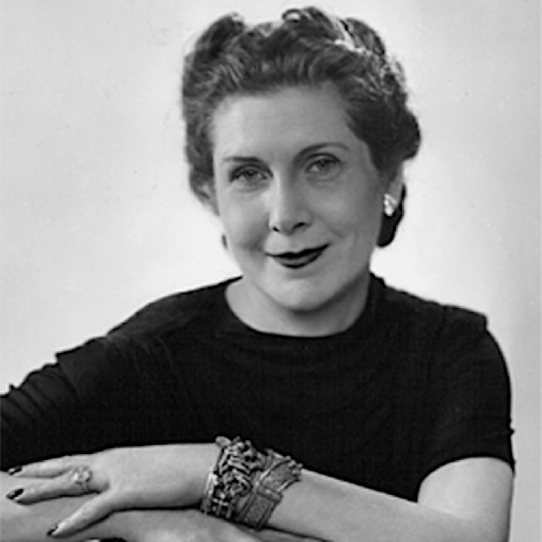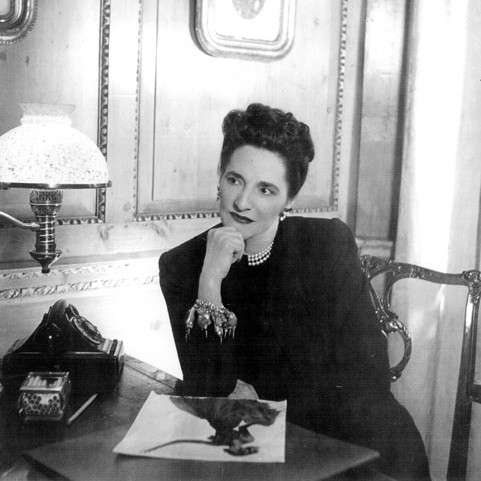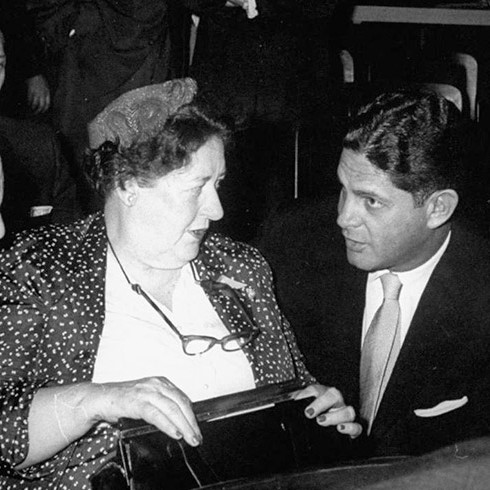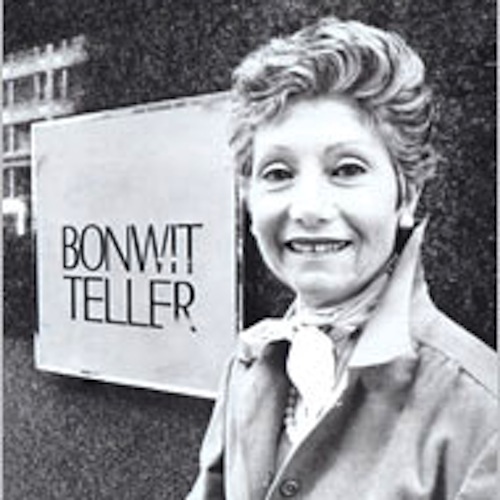Executive Women
Executive Women

Margaret S Getchell (1842-1880)
A distant cousin of R.H. Macy, Getchell started as a cashier in the first New York Macy’s in 1861 and rose to become store superintendent; she was one of the first female executives of a retail establishment, and oversaw the store’s 200 employees. Several of the store’s savvy marketing strategies, such as remaining open on Christmas Eve, are attributed to Getchell. She later married junior partner Abiel T. LaForge, who became a co-partner in ownership of Macy’s after R. H. Macy’s death in 1877. She died in 1880 at the age of 38.

Hortense Odlum (1881-1970)
While Dorothy Shaver is often credited as the first female president of an American department store, the honor belongs to Hortense Odlum, who presided over Bonwit Teller from 1934-1940. The wife of owner Floyd Odlum, Hortense was brought in in an advisory role to turn the store around. She subsequently introduced a Consumer Advisory Committee to make recommendations and re-oriented the store to be more of a “Woman’s Place”. Following her stint as president, Odlum also served as Chairwoman of the Board at Bonwit Teller from 1940-1944.

Dorothy Shaver (1893-1959)
Known as the “First Lady of Merchandising” Dorothy Shaver was a key figure in American fashion. Shaver had a long career at Lord & Taylor beginning in 1921, serving on the board of directors, as vice president of fashion and advertising, and finally as president of the store from 1945-1959. She launched the “American Look” campaign in 1932, and as president, her promotion of American designers helped them advance to prominence in both the national and international fashion industry. She was named the Associated Press’ Outstanding Woman in Business in both 1946 and 1947.

Bernice Fitz-Gibbon (1894-1982)
An advertising specialist, Bernice Fitz-Gibbon worked at various department stores including Marshall Field’s, Macy’s, Wanamaker’s and Gimbels. After moving to New York City in the 1920s, Fitz-Gibbon worked in Macy’s advertising department for 12 years. She is credited with coming up with their famous slogan “It’s smart to be thrifty”. From 1940-1954, she worked as publicity director and a member of the executive board at Gimbels, before leaving to open her own advertising consultancy offices. Considered a pioneer in the field, Fitz-Gibbon was inducted into the advertising Hall of Fame in 1982.

Helen Galland (1925-2008)
Helen Galland was the fifth woman to become president of a major New York fashion store. From 1980-1983, Galland was president of Bonwit Teller. While the original Fifth Avenue flagship had been demolished to make way for the Trump Tower, Galland oversaw the opening of the new store in that building, as well as the national chain. More importantly, she attempted to restore some of Bonwit Teller’s former reputation as a destination for classic and elegant fashions, that had floundered since Mildred Custin’s tenure.

Dawn Mello (1936- )
While Dawn Mello’s first stint as a fashion director was at B. Altman in the early 70s, she is best remembered for her long career at Bergdorf Goodman. Arriving at the store in 1975, Mello was a major force in modernizing the store’s image and rebranding it as a designer destination. Mello successively rose through the ranks at Bergdorf, acting as president from 1983-1989. Then, she briefly moved to the Gucci Group before returning to the helm of Bergdorf Goodman, once again as president, from 1994-1999. In 2001, Mello won the first Eleanor Lambert award for contributions to American fashion.
Mildred Custin (1906-1997)
Bonwit Teller’s second female president, Mildred Custin was another pioneer for women executives. She was a VP at Wanamaker’s in 1951, became president of Philadelphia’s Bonwit Teller in 1958 and took over as head of the company in 1965, where she remained until 1970 (when she was forced to retire due to Bonwit’s policy on mandatory retirement for executives at age 65). She notably championed the use of designer boutiques in the store, and introduced leading fashions in her S’fari room from such designers including Andre Courreges, Emmanuel Ungaro, Pierre Cardin and Calvin Klein.
Katherine Murphy (1917-1975)
Katherine Murphy’s career in fashion began as a sportswear buyer at Lord & Taylor in 1940. Over the next 40 years, she would also work at Bergdorf Goodman and Bonwit Teller before settling at Bloomingdales in 1967. Rising to become vice president and fashion director, Murphy, alongside chairman Marvin Traub, re-invigorated Bloomingdales’ image to become a fashion leader in New York. She is credited with bringing Yves Saint Laurent Rive Gauche, Valentino, and Missoni to Bloomingdales. Better known as Katie Murphy, she died in 1975 at the age of 58.
Selma Weiser (1924-2009)
From humble beginnings as a notions buyer for a department store, Selma Weiser went on to build a retail empire in New York City’s Upper West Side. Opening a small boutique named Charivari in 1967 at 85th and Broadway, Weiser’s store would rise in the ranks of the city’s fashion intelligentsia. At its peak in the 1980’s, Charivari boasted five locations across the Upper West Side. Known for a selection of traditional and avant-garde fashions for men and women, Charivari introduced designers such as Marc Jacobs, Issey Miyake and Claude Montana to the American market. The store closed in 1999 after filing for bankrupcy.